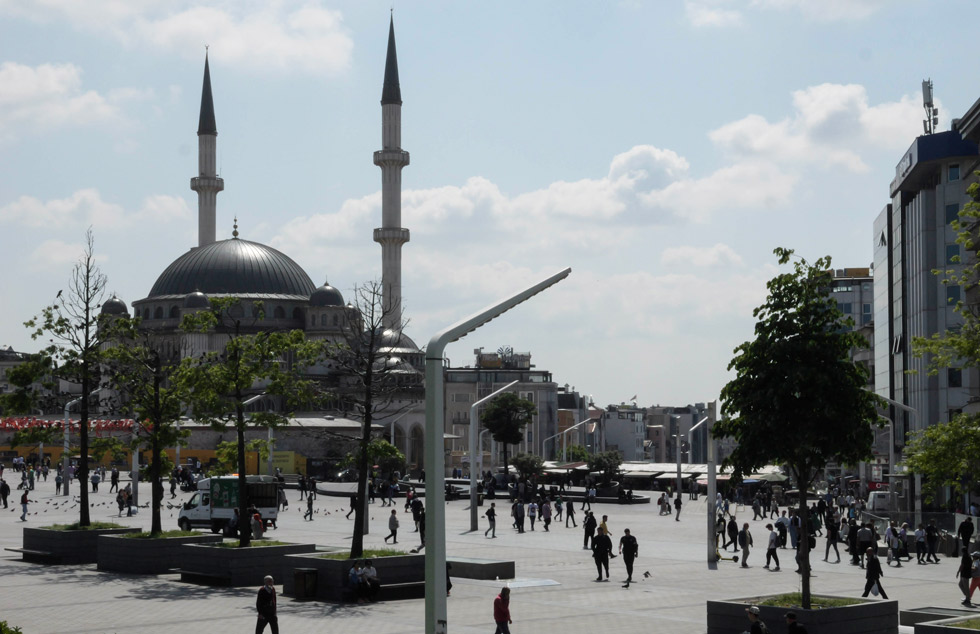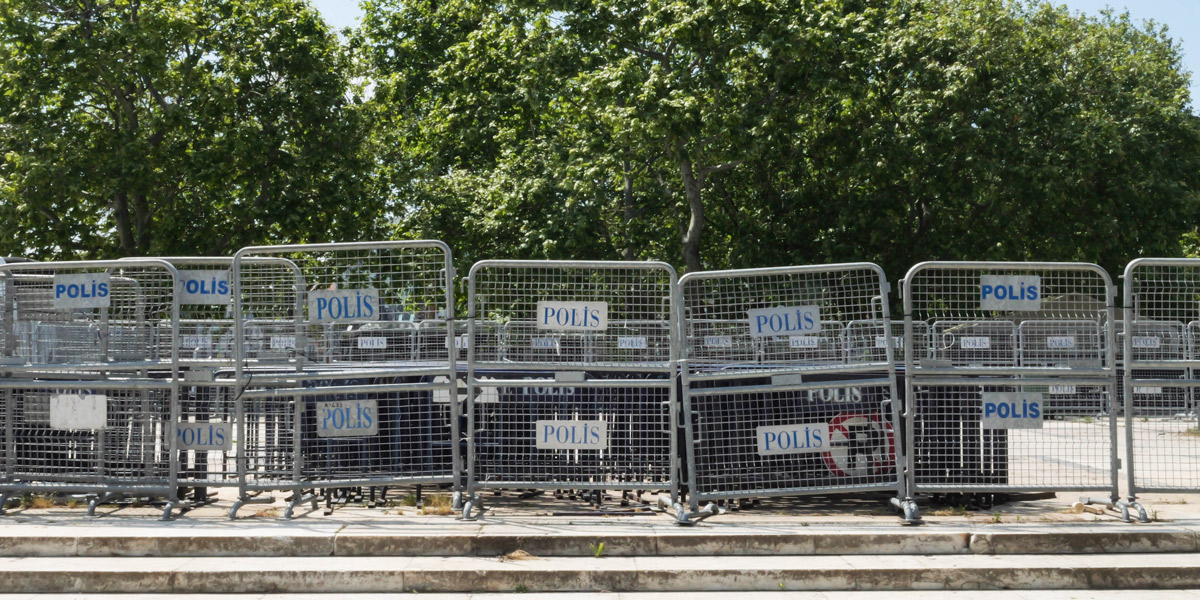Gezi Park in Istanbul has enormous value for Turkish society and politics. Taksim Square, which is adjacent to the park, is probably the most important in the whole country: it is one of the symbolic places of the establishment of the Turkish republic, a hundred years ago, and has always been the place for political events, public demonstrations, of major protests. Exactly ten years ago, on May 28, 2013, the most important mass protests in recent Turkish history began between Gezi Park and Taksim Square against the government of Recep Tayyip Erdogan, who was prime minister at the time. Even today, in Istanbul, when one asks: «Were you in Gezi?», everyone knows that they are talking about what happened ten years ago.
For Turkish civil society, Gezi was a formative moment for thousands of young people who still consider those protests as the moment they understood they wanted a different Turkey. However, many believe that Gezi was also a formative moment for Erdogan, and one of the most important turning points in his political career, which led to the increasing use of authoritarian methods of government and the progressive restriction of civil and political liberties.
June 15, 2013 in Gezi Park (AP Photo/Vadim Ghirda)
The visitor who finds himself strolling in the Gezi park today might be a little disappointed: it is little more than a small garden, a square of a few tens of meters on each side, with a few trees, games for children and little else. But a corner of the park, for years, has been completely cordoned off and manned by the police, with trucks and armored vehicles. Every now and then a police helicopter also flies: it is a sign that the tensions around Gezi have never completely subsided. In the violent clashes between the demonstrators and the police, which lasted for weeks, 11 people were killed, and thousands were injured.
In Gezi, protests began for environmental reasons, against an imposing building project which envisaged the construction, in place of the park, of a shopping centre, luxury apartments and a mosque. There were numerous reasons why the citizens of Istanbul did not want the park torn down: first of all, because the tiny garden is the only public park in that area of Istanbul. Secondly, because the plan to build a mosque, in a place strongly linked to the republican and secular tradition of Turkey, was perceived as an affront by the opposition opposed to Erdogan.

The Taksim mosque, completed in 2021 (Valentina Lovato/Il Post)
The first protests against the demolition of the Gezi park were formed in the night between 27 and 28 May 2013. Initially there were about fifty environmental activists who had pitched tents in the park to try to stop the vehicles that had come to destroy it. On 28 May there were the first clashes between the police, who were trying to clear the park to allow the bulldozers to advance, and the peaceful demonstrators.
According to many of the protesters who attended Gezi, it was not so much the protest itself that attracted people to the park, but the disproportionate police crackdown on those early protesters and their tents. Word spread very quickly on social networks that the police were violently attacking a garrison in Gezi, and hundreds of people rushed to defend it. In the following days, they would number in the thousands.
In the first days, the demonstrators managed to drive the police out of Gezi and occupy both the park and Taksim Square, with tents and haphazardly set up barricades. In the occupied zone a sort of self-managed citadel of the opposition was created, with debates and meetings, lectures, political discussions, libraries and concerts. It is in those days that the myth of Gezi was created, which was fundamental for many young Turks. “It was heaven,” says Nida Kara, who in Gezi’s days was an English Literature student in Istanbul and today she is the spokesperson for Citizen’s Assembly, one of the city’s most prominent civic organizations. “There was generalized equality and there was the awareness that we all wanted a better country.”
Another person who took part in Gezi and who is now a law professor at an Istanbul university (she asked not to be named for fear of retaliation) described the days of the occupation as follows: «It was fantastic, it was extraordinary it was something out of this world. Thousands of people gathered to ask Erdogan: ‘Please listen to us!’
In the occupied Gezi citadel, many people stayed overnight in tents, while many others went to sleep in their homes and returned the next morning. Much of the city supported the Gezi protesters, who received support from opposition political parties, singers and actors, numerous professional categories, and even the city’s major football clubs. Some of them said that when they returned home in the evening, the elderly ladies of Istanbul leaned out of the windows banging pots to welcome and celebrate them.
From Gezi, the protests first spread to the city of Istanbul, and then throughout Turkey. In Istanbul, although the police had withdrawn from Gezi, clashes continued on the edge of the square, and in other parts of the city there were marches of demonstrators for almost two weeks. The police always responded in an extremely violent manner, firing rubber bullets and tear gas canisters indiscriminately at people. From Istanbul the protest spread to many cities of the country, in similar ways: marches and occupied squares. Each time, the police responded with violence.
At least three and a half million people, out of a population of 80 million, are believed to have participated in the protests in those days throughout Turkey.
The protest, which began for environmental reasons, quickly turned political. In the years preceding Gezi, the government of Recep Tayyip Erdogan had become increasingly authoritarian. Erdogan won his first elections (then as prime minister) in 2002, and then in 2007 and 2011, always obtaining overwhelming majorities. He grew more and more confident in his power than he did, and began trying to impose his own Islamist worldview on even the most secular part of Turkey. It was at that time that the Turkish government began to threaten the freedom to sell alcohol and tried to meddle heavily in people’s lives: Erdogan, at one point, said that it was unseemly for engaged couples to kiss in the street and argued that Turkish women should have had at least three children each. It was also in that period that the first arrests of opponents and adversaries began, for crimes that the opposition considered specious.
Gezi’s protests, in this sense, became protests against the government, and against Erdogan’s growing authoritarianism.
Erdogan began to feel threatened. If at the beginning of the protest he had defined the demonstrators as “thugs”, as things went on he began to speak of “terrorists”, and to accuse them of having connections with various terrorist and violent groups. Indeed, the demonstrators also committed acts of violence and vandalism during the days of the protests, but they were mild and sporadic when compared to the extremely violent measures that the police took against them.
In reality, Gezi’s protests never really constituted a danger for the Turkish government, but at the time the Arab springs had made it clear that even relatively marginal demonstrations could trigger major revolutions. For a few days, from 3 to 6 June 2013, Erdogan even left Turkey: officially for a series of diplomatic meetings in Morocco and other countries, but many Gezi protesters claim (without proof, actually) that he did it because he feared the protests would have extended up to him. They didn’t.
After weeks of very hard clashes, which caused deaths and thousands of injuries throughout the country, the police entered the Gezi citadel on June 15, 2013: that was probably the most violent night, in which entire streets of Istanbul were filled with tear gas shot by the police. Journalists were also targeted. All the people who were in Gezi that evening have at least this memory in common: “I couldn’t breathe.”
After the eviction, the police created a cordon of men and barriers around Taksim Square and Gezi Park, to prevent the demonstrators from returning. In the following days there were some skirmishes, and the most active of the demonstrators tried to organize protests and sit-ins in other parks of the city. But the protest subsided quickly enough, and between July and August the situation calmed down again. Since then, the police have never left Gezi Park.
İsmet Akça, a Turkish political scientist who participated in the protests, says the anarchy and light-heartedness that made the occupied Gezi citadel exceptional was also its main problem. “We didn’t have a political center that could coordinate us and decide strategies, while in front of us we had the Turkish state, with the police and all its repressive apparatus”. Among other things, Akça is part of the so-called “Academics for Peace”, an association of professors and academics who, since 2012, have been calling for a peaceful resolution of the conflict between Turkey and the Kurdish population. For this many of them suffered severe repression and were forced to resign from their academic posts. Akça was fired from his post at Istanbul Technical University in 2017. Some of his colleagues also received criminal convictions.
For many who attended, Gezi was a moment of political awakening. Of course, only a small fraction of the protesters back then became political activists, but many people remember Gezi as the moment they realized they wanted a different Turkey than Erdogan’s. According to many observers, Gezi was also a political awakening for Erdogan.
In 2013, the then prime minister was ending his first ten years in power, which both in Turkey and among the international community were generally judged very positive. In his first two terms, Erdogan brought Turkey tremendous economic growth (GDP more than tripled) and lifted millions out of poverty. He introduced some social security instruments and started gigantic infrastructure projects that changed the face of many cities, despite numerous controversies. At that time, many non-Muslims and people from the center or centre-left were also voting for Erdogan.
More generally, Erdogan was considered in the West a democratic leader who had managed to create a synthesis between the Islamism he professed and the practice of democracy.
Gezi’s brutal crackdown on the protests forever changed how the West viewed Erdogan, and probably also changed how Erdogan perceived political support for him. After Gezi, Erdogan became convinced that his increasingly conservative policies were now irreconcilable with a large part of the country and began to “consolidate his electorate in a more intense and bold way,” says İsmet Akça. “I can say that at that time he created a more authoritarian political state based on the police and judicial system, using more repressive methods.”
Gezi was certainly not the only turning point for Erdogan (the attempted coup d’etat of 2016 was probably even more important), but it accelerated a process of polarization of Turkish politics that was probably already underway, but which after the protests and repression became unstoppable.
Today, relatively little of the movements that animated Gezi remains in Istanbul, even if for many, participation in protests is still a sign of recognition: knowing that your interlocutor was in Gezi means knowing that he is on your side.
Over the next few years, the government managed to build a large mosque adjacent to Taksim Square, but abandoned the idea of destroying the park to build a shopping center over it. Despite the police principals, despite the tension, “it’s 2023 and the park is still there,” says Nida Kara, the former student.
